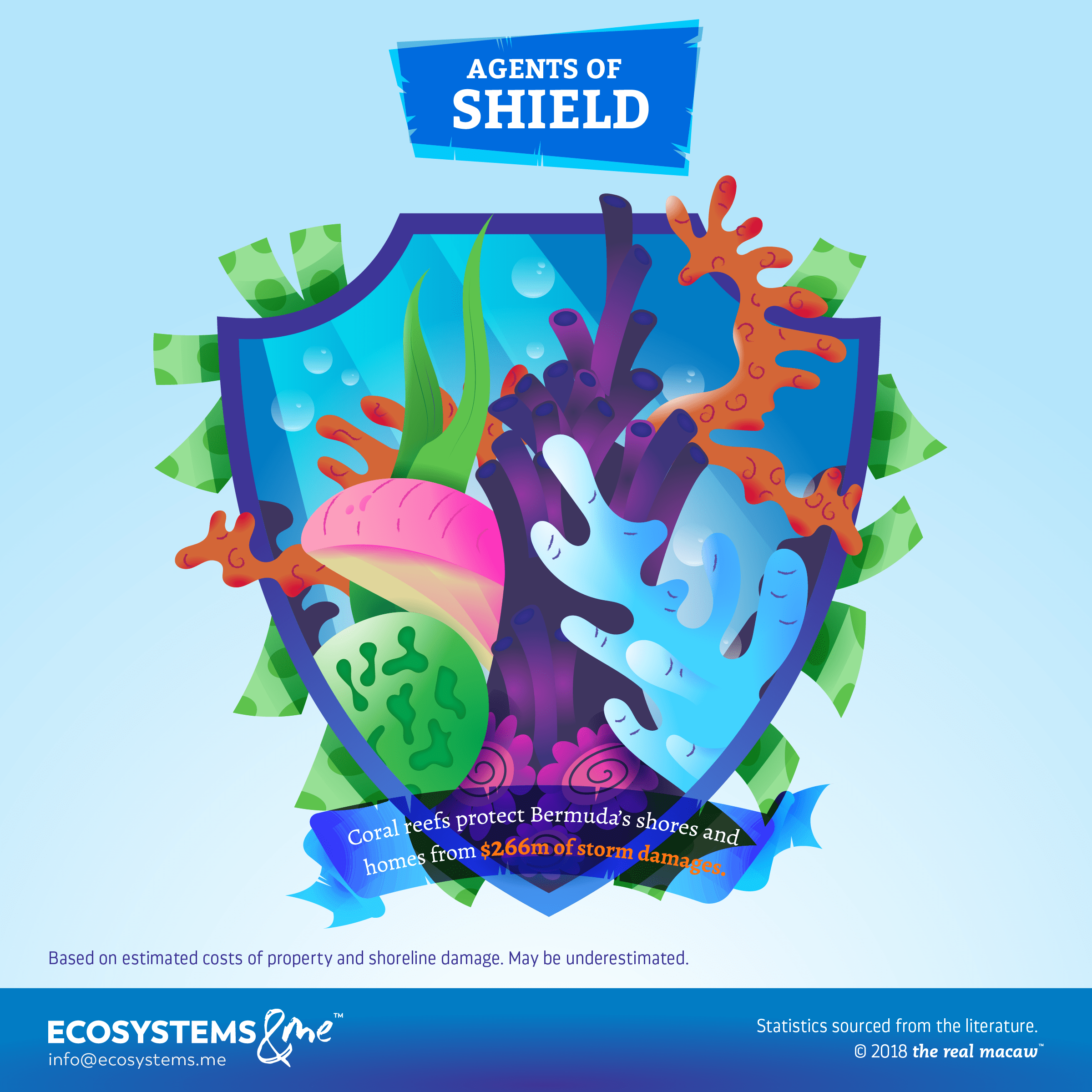
Answer: the real estate – if there’s a reef. Welcome to S.H.I.E.L.D, Bermuda style, where the not-so-secret agents are coral reefs that shield the Bermudan coast, its people, and their homes from hurricanes, storms, and damages.
How do I protect thee? Let me count the ways!
Reefs help keep the coastline safe in a few different ways. They protect it from storms (Bermuda is in hurricane territory), floods, and currents, mostly by preventing damage and erosion. And how do they do this? By absorbing wave and water energy. Hurricanes and storms cause heavy and large waves that can flood coastal areas. And currents, tides, and regular waves lapping at the beach can slowly erode rocks, sand, and waterfronts. Both ways, coastlines are at risk, and so are people and their homes.
Bermuda’s reefs protect it from erosion and flooding.
Why is this important? To answer that question, we have to take a little step back in time to talk about how Bermuda was formed. And by ‘little’, we mean to around 100 million years ago.
So how was Bermuda formed?
Way back then, there was only a volcano, which (luckily for the future residents of Bermuda) went extinct, except when it erupted again about 33 million years ago. Then, as the peaks eroded below sea level, coral reefs formed, and started depositing sand – mostly thanks to species like parrotfish, which eat and digest corals. Over time, the sand became dunes… and then rock. And because coral skeletons are actually made up of limestone, that sand is actually lime sand, and the rocks are actually limestone.
Expensive real estate + soft rocks + waves = bad combination. Unless you have reefs to help.
So the island is actually a small limestone cap on top of an extinct underwater volcano! And because limestone rocks aren’t particularly hard, they’re at extra risk of erosion. So keeping them safe is extra important. Especially when Bermuda has expensive real estate along the waterfront and is at risk from hurricanes.
Enter reefs, locked and loaded
Bermuda actually has three types of reef: lagoon, rim, and terrace. Lagoon reefs are pretty soft, because they’re inshore, and protected from the ocean by rim and terrace reefs – so they only have low waves. But they do have to deal with lots of sedimentation (settling sand) – so as you might expect, they’re good at removing it.
Brain (and star) corals are the first line of defense against the worst of ocean waves. It’s good to have a hard head!
Next up are rim reefs, and then furthest out to sea, terrace reefs. Both of these are much harder (mostly brain and star corals. It’s good to have a hard head!) because they are the island’s main wave breakers and the first line of defense against the open ocean and storms. They get the worst of the ocean waves, including storm surges and swells.
Hurricane x flooding x Bermuda real estate – what could go wrong?
Of course, the worst part of a natural disaster like a hurricane or flooding is the risk to peoples’ lives. But a lot of the time people can escape, or move to higher ground. Homes and infrastructure can’t, and repairing them costs a lot of money. Which is why we often see $$$ estimates of storm damage. And after all, if you can protect infrastructure from damage, people will probably be safer too .
In Bermuda’s case, expensive real estate + soft rocks + waves = bad combination . A category 3 hurricane that hit in 2003 caused average damage of around a quarter of property value! Mixing damage patterns with other data like
- storm patterns
- areas at risk of high waves and flooding
- how stable the shoreline is
- coral reef locations
- real estate value
can tell you how much money the reefs save, by preventing damage to homes. Which is another way of telling how much (free!) protection the reefs provide for Bermuda. And that’s $266 million a year, on average. How would you replace that, if you didn’t have a reef?
